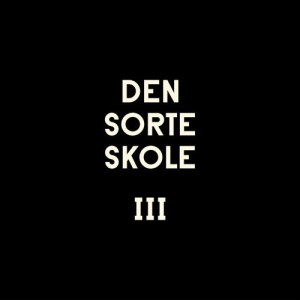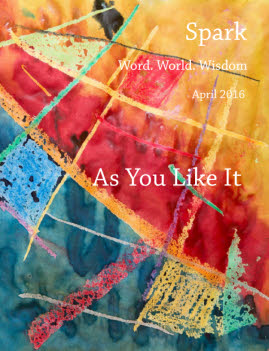by Dheeraj SP
The practice of sampling transformed music more than 30 years ago. Artists began snipping pieces of music that they liked, from either obscure tracks or popular ones, and incorporating them into their own. Primarily used in genres like rap and hip-hop to form simple background loops or spoken-word sections, its use in the mashup genre has resulted in more creative and critically acclaimed end products. One such act whose music centers around the art of sampling is the Danish DJ group Den Sorte Skole, who showcased their immense talent on their third full length album, Lektion III in 2013.
Having returned from touring in 2011 in support of their previous album Lektion #2, the DJ collective comprising of Simon Dokkedal, Martin Fernando Jakobsen and Martin Højland began working on Lektion III by collecting samples and making initial drafts. However, the group was soon reduced to a duo after Jakobsen departed to focus on another project. But this seemed to have no effect on the outcome of the album. Comprised of thousands of samples from more than 250 old vinyl records from 51 countries, the 90-minute magnum opus takes the listener on a musical journey.
Considering the size and scale of the album, the tracks on the album are grouped into six parts. The parts have different purposes, like setting the tone of the album, showing their experimental side, taking you on a contemplative journey or a good old electronic shuffle. The purpose and identity of each part grows on you every time you listen to the album. While the parts are separate and distinct, the common denominator is the love of the group to mix and blend snippets of different songs to construct something new altogether. It’s something they’ve always done well before, but it’s taken to a new level here.
Take for example the song ‘Formula Dub’, whose name is derived from Keith Hudson’s reggae track of the same name, from where the bassline is sampled. Vocal harmonies from the song “Kore, Kore Coat Mereya Purana” off the 1975 album Festivals of The Himalayas are juxtaposed with the reggae base to create a combination never heard before. The song is perfected with the addition of the enigmatic horns from the 1963 Bollywood song ‘Mujhe Duniyawalo Sharabi Naa Samjho’, which act as the hook to this unique combo of genres before the song smoothly transitions away with a straight sample of Satya Sai Maitreya Kali’s 1972 psychedelic, folk song “Sam Pan Boat”. The group manages to blend dub-style reggae with a Himalayan folk song and a Bollywood track before topping it off with mellow, psychedelic folk track.
The experience of listening to Lektion III is incomplete without the accompanying booklet and its liner notes, as not only does the group go to great lengths to list the source of every sample that’s used on the album, but also provide insightful commentaries about the artists, the tracks and their thought process while putting all of it together. It goes to show how much they care and appreciate the music they use throughout the album. It’s impossible to not look up the original recordings of old, forgotten tracks and artists and embark on another explorative journey, all the while appreciating what the group has done with these tracks.
One glance at the track list of samples used reveals something quite interesting: that most of these songs were released in the 80s or before. But thanks to their excellent production, the songs on the album rarely sound dated (unless the group wants them to). Many of the artists on the original songs are given new life thanks to the new context they’re placed in. Whether it is the powerful voice of 50s blues singer Screamin’ Jay Hawkins on the song ‘Did You Ever’, Brigitte Fontaine’s eclectic vocals on ‘Le Brin’ or Asha Bhosle’s sweet, seductive voice from Sadma on ‘O Babuaa’, the songs preserve their nostalgia while still sounding modern and fresh.
The great quality of sound comes from the group’s insistence on using high quality samples pulled from vinyls over low quality MP3s. Around 70 percent of the source material were collected on vinyls, while the rest were mostly WAV files created from otherwise impossible-to-find vinyls sent upon request from the people who run original music blogs or from record collectors all over the world, partly making this record a worldwide, collaborative effort. The group even goes as far as thanking a large number of such contributors in their liner notes, along with every artist they sampled.
Despite the length of the album, listening to it is not a tiresome feat. Each song flows well into another and the aforementioned grouping into parts ensures that the songs and the album itself remain memorable. There’s enough change in pace and tonal dynamics to keep the experience interesting. The range of genres that the album offers ensures you keep coming back for more. From classical music to reggae, dubstep to glitch, Indo jazz to krautrock or Bollywood to electronic, there’s something for everyone here. The album takes you on a journey through time, place, cultures and emotions.
With all the quality, talent and diversity this album offers, there are some things this album is, and some that the album isn’t. For starters, this album isn’t for the casual listener. It’s not the kind of music you’ll prefer playing at a party or listening to in your car on your way to work. It’s not the kind of album that has catchy vocals, addictive hooks and the usual verse-bridge-chorus song structure. It’s also not the most accessible album considering the length, complexity and diversity on offer. Some may easily be put off by strange sounds and other-worldly vocals. Some may not even be able to sit through the entire album.
That being said, this album is easily the Holy Grail for an audiophile or a music purist. To the open-minded listener, this is the gift that keeps on giving. With a plethora of genres, styles, instruments and sounds being offered, you are sure to discover more from the album on subsequent listens. Just like a book can take you to new places through your imagination, this album transports you around the world with its wide range of samples and helps you explore new dimensions with its brave experimentation. For those who are willing to invest some time, patience and attention to this album, great the rewards will be. While their first two albums showed their potential with exciting mashups between the popular and the obscure, Den Sorte Skole fulfill their potential and perfect their art in this structured, diverse and well-polished album that is sure to redefine what music can be.






